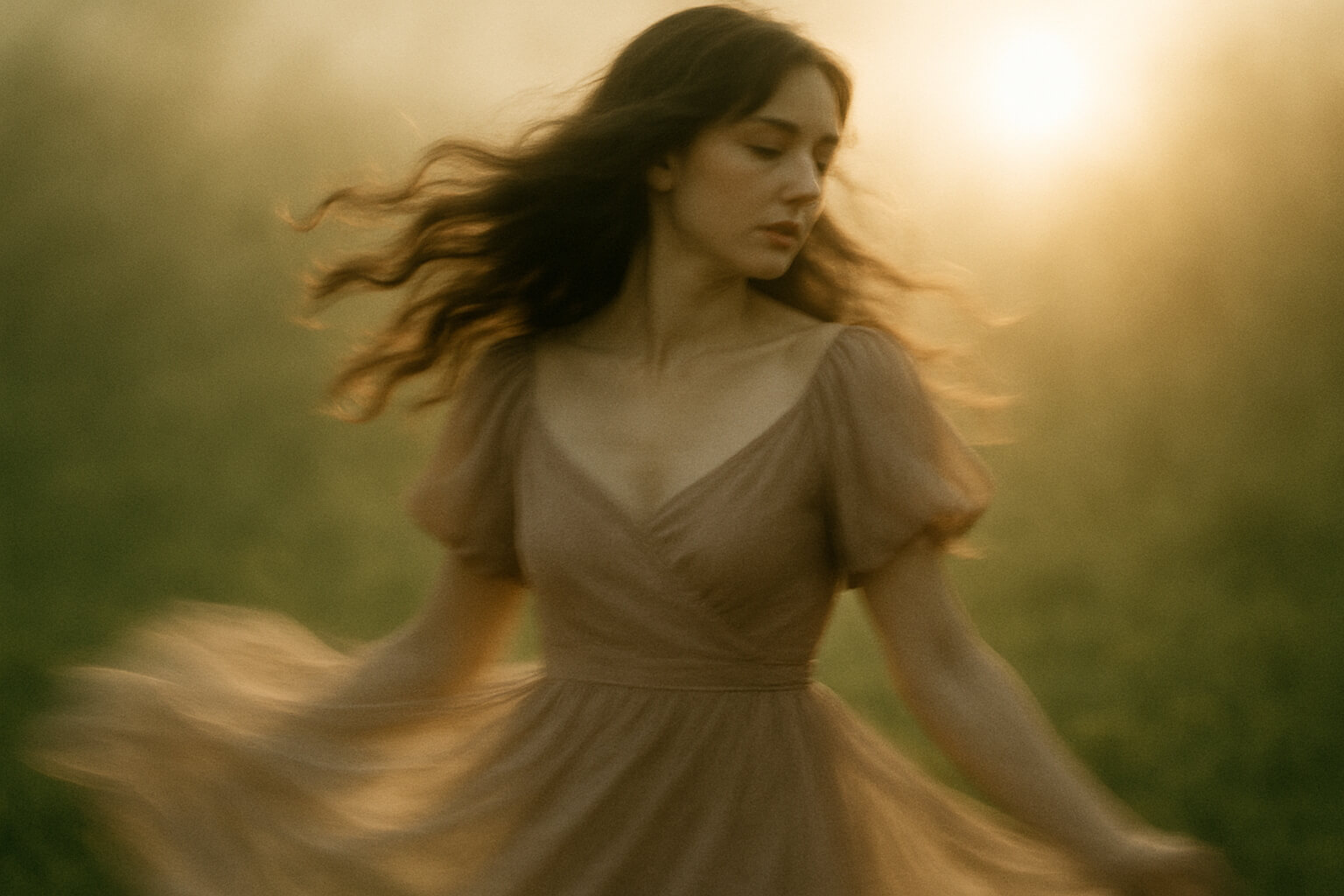How to Use Motion Blur in Portrait Photography for Artistic Impact

Motion blur isn’t just an accident—it can be a powerful artistic tool when used with intention. In portrait photography, motion blur can add emotion, depth, and storytelling to your images. Whether it’s the swish of hair, flowing fabric, or purposeful camera movement, incorporating blur creates a unique atmosphere that sharp, frozen images can’t replicate.
Why Use Motion Blur in Portraits?
Creative motion blur can:
- Convey Movement & Energy: The blur emphasizes dynamic action, bringing your subject’s movement to life.
- Enhance Mood & Drama: Motion blur adds a sense of drama or ethereal beauty that still shots lack.
- Blur Background Distractions: It isolates the subject and helps the viewer focus on emotion and form.
- Transform Simple Poses: Simple and static poses can be elevated to something more expressive with motion blur.
Also explore:
Best Camera Settings for Motion Blur
To intentionally introduce blur, you’ll need to adjust your shutter speed and technique. Here are the settings and techniques that work best:
Recommended Settings:
- Shutter Speed: Between 1/15s to 1s depending on how fast the subject is moving.
- ISO: Keep it low (ISO 100-400) to avoid introducing noise, especially when using longer exposure times.
- Aperture: Use a moderate f/stop (f/4–f/8) to maintain some depth of field while still allowing enough light to capture movement.
Techniques to Try:
- Slow Shutter with Subject Motion: Ask your model to move their hair, spin, or walk slowly. The motion will blur, but the subject remains central.
- Camera Panning: If the subject is stationary but the background is moving (e.g., a car passing by or walking through a crowd), move your camera at the same speed as the subject. This keeps the subject sharp while creating motion blur in the background.
- Drag the Shutter: Combine a flash with a slow shutter speed to capture both sharpness and blur in the same image. The flash freezes the subject while the slow shutter captures the motion blur around them.
Related: Best Shutter Speed Tips
Creative Ideas for Motion Blur Portraits
Here are some creative ways to experiment with motion blur and create unique portraits:
- Hair Toss or Fabric Movement: Capture the moment when the subject tosses their hair or the fabric sways, creating a dreamy, flowing blur. This works well for fashion or beauty shots, adding fluidity to the composition.
- Dual Exposure Blur: Combine sharp and soft exposures in one frame, where the sharp elements are layered with areas of motion blur to create surreal or abstract effects.
- Backlit Motion: Shoot against the light (such as during golden hour) to create glowing edges around your subject while their movement blurs. This can create stunning silhouettes and an ethereal feel.
- Hands or Expression Blur: Capturing subtle motion in the hands or face conveys deeper emotion. Slight movement in the limbs or facial expressions can transform a static shot into a more dynamic and expressive one.
- Rain or Wind Shots: Use motion blur to show the effects of the weather while your subject remains static. The wind in the hair or rain droplets falling create beautiful textures, enhancing the feeling of the moment.
Try this with Split Lighting to heighten drama, especially in moody or high-contrast shots.
Post-Processing for Motion Blur Portraits
Post-processing can enhance or simulate motion blur if needed. Whether you want to fine-tune the blur or enhance its effects, here are some post-processing tips:
- Lightroom or Photoshop: Use radial or directional blur filters to selectively blur parts of the image, emphasizing the motion of the subject or the environment.
- Blend Modes: Overlay blurred layers to create surreal effects, such as combining multiple exposures with various levels of motion blur.
- Dodging/Burning: Focus the viewer’s attention on the sharpest areas of your image by selectively lightening (dodging) or darkening (burning) certain parts of the portrait. This guides the viewer’s eye and emphasizes the movement.
Also read:
Pro Tips for Effective Blur
To capture beautiful motion blur portraits, follow these pro tips:
- Use a Tripod for Controlled Camera Motion: A tripod helps you keep your camera steady during slower shutter speeds, ensuring more control over the blur.
- Pre-focus on the Eyes or Key Point: Before introducing motion, pre-focus on the subject's eyes or a key point in the frame. This ensures that when the blur is applied, the focus remains clear in the right areas.
- Shoot in Burst Mode: To catch the perfect balance between blur and clarity, shoot in burst mode. This way, you increase your chances of capturing the perfect moment of motion while maintaining focus where needed.
- Communicate with Your Model: Guide your model to ensure that the motion is purposeful and feels natural. Good communication ensures the movement looks deliberate, not accidental, adding emotion and storytelling to the shot.
Mistakes to Avoid
Even experienced photographers can sometimes make mistakes when shooting motion blur. Here are some common pitfalls to avoid:
- Random Blur: Motion blur should always look deliberate. If it appears random, the photo may feel like a mistake rather than an intentional artistic choice.
- Too Much Movement: A subject that moves too quickly can result in complete loss of definition. Keep the movement controlled and purposeful to maintain clarity while still achieving the desired blur.
- Improper Lighting: Low light can help capture blur, but be cautious about underexposure. Too little light can ruin the tonal balance, making your images muddy. Use flash, continuous light, or a controlled environment to avoid unwanted dark patches.
Related: Common Mistakes in Photography
